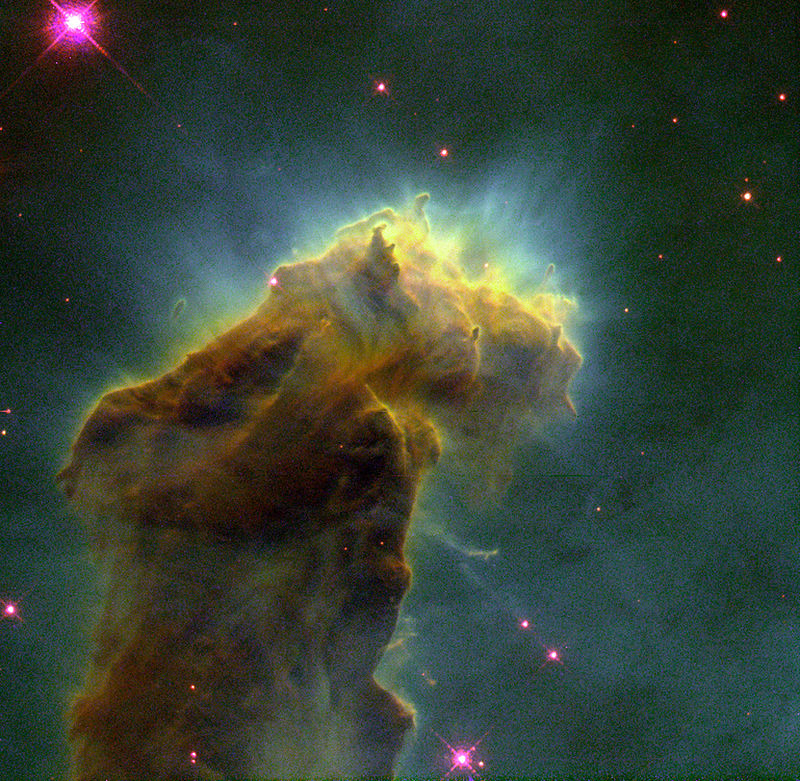In my last post I discussed the Pillars of Creation – one of my favorite cosmic structures of all time. In that post, I mentioned the incredible magnitude of the Pillars, being more than 5 light-years across in some locations. While this is still an immense distance, it is nothing compared to many of the other cosmic structures in the universe. What if there was something so large, that it defied the fundamental laws of physics? That structure would be the Huge Large Quasar Group.

Artistic interpretation of heat and light emitting from friction of particles as they circle a black hole
The Huge Large Quasar Group (Huge LQG), or sometimes referred to as just the Large Quasar Group, is a massive cluster of 73 quasars. Being discovered in 2013 by English astronomer Roger G. Clowes, the LQG is a very recent discovery in the scientific world.
What is a quasar, exactly? A quasar is one of the brightest objects in the entire universe. They are giant celestial bodies that usually contain super black holes at their center. These black holes can be billions of times larger and more dense than our Sun! Since light itself cannot escape from black holes, the light we perceive from quasars is actually heat and friction from many small particles rubbing together while being packed closer and closer into the black hole.
With that in mind, the Large Quasar Group is close group of 73 quasar systems. The LQG spans a mind-boggling distance of 4 billion light-years across! At one point in time, the LQG was the largest object discovered in the entire universe. In fact, the LQG is so large, it defies the laws of physics.
Something called the Cosmological Principle was a theory that tried to capture the magnitude of the universe and place it into a uniform rule. The rule stated that if you zoomed out enough, the universe would look relatively uniform in size and in distribution of celestial objects. After calculations, the theory formulated a limit of 1.2 billion lights years. This mean that objects larger than 1.2 billion light years simply should not exist. Yet the LQG exists at a staggering 4 billion light years in diameter!
While not much is currently known about the Huge Large Quasar Group, scientists think it provides us with opportunities to see into the birth of the universe. I think it is fascinating how we keep finding new things in outer space. To even imagine that there is something that large just floating out in the middle of nothingness continues to fill me wonder and curiosity. Considering how our solar system is just a speck in a much larger Milky Way galaxy, which is just a speck in something even larger, puts so many things in perspective.



